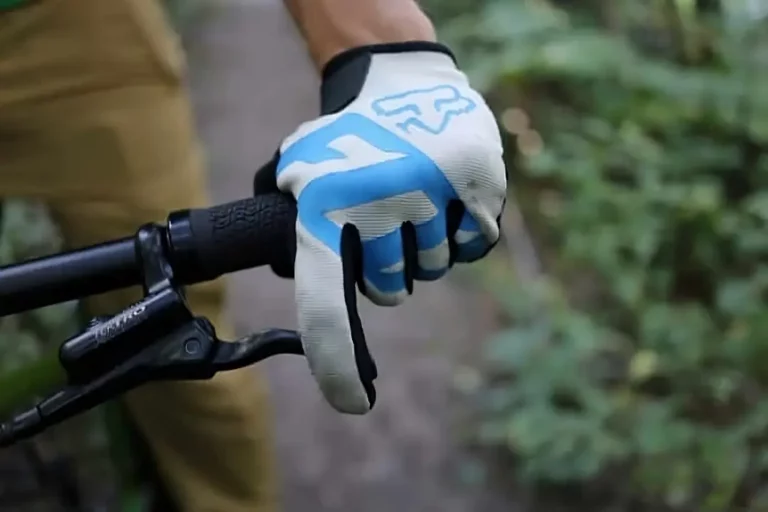Do Mountain Bikes Need Suspension?

If you’re looking to buy yourself a mountain bike, you’re probably wondering, do mountain bikes need suspension (also referred to as ‘shocks’)? This is an often-debated question.
Some more traditional riders will tell you to ‘go rigid’ (no suspension) because it allows you to feel the trail more, making riding even more exciting. Plus, full-suspension bikes are often more expensive and heavier, making them harder to ride uphill.
However, in recent times most mountain bikes tend to already come with at least front suspension and higher-end bikes may even come with full suspension. So, what’s the deal with suspension?
Mountain bikes with suspension will provide the rider with more comfort and support than bikes without.
Suspension is shock-absorbing so when you go over bumps or land big jumps, you won’t feel them as much. This gives you better comfort and more control, particularly when you’re traveling at high speeds.
Should I get a bike with front suspension?
Mountain bikes with front suspension only are often referred to as ‘hardtails’ because the rear or ‘tail’ of the bike is rigid due to the lack of suspension.
Hardtails are the most desirable option in terms of bike suspensions. This is because it provides the rider with a nice mix of support without completely numbing the blow of landing a good jump.
As they have less suspension than full-suspension models, they are also lighter which allows them to accelerate faster and climb hills better.
However, if you are riding a particularly rough trail you’ll soon discover that solely relying on front suspension can be quite hard on your body, particularly your back and backside.
Plus, as much as they’re designed to protect you, suspension systems help to protect the bike too. Constantly riding over harsh terrain will wear down your bike over time, resulting in bends and breaks. By absorbing some of this impact, suspension systems improve the longevity of your bike.
Which suspension is best for bike?
When it comes to choosing which suspension is best for you, it’s worth looking at the pros and cons of all your options. The two most common suspension systems are front suspension, or ‘hardtails’, and full suspension.
Front-suspension bikes are great because they are often less expensive than their full-suspension counterparts. These bikes will also require less maintenance such as cleaning and lubricating which requires you to take them apart. This is simply because there are fewer of them than on full-suspension bikes.
They are also lighter and enable you to peddle more efficiently, as some pedaling force is absorbed by the shocks. So, fewer shocks will transfer less energy meaning you’ll be able to accelerate faster.
Less suspension, however, can be painful for the rider. The lack of support in the rear can be hard on your body, so you may not be able to ride for as long as if you had a full-suspension bike.
The full suspension has its advantages. These systems will give you full impact absorption, providing you with ultimate comfort and protection. So, you can ride over super harsh terrain and land bigger jumps without punishing your body or your bike as much.
Full suspension systems also handle downhill trails much better than hardtails. Not to mention they last longer. Having shocks on both the front and rear should protect the bike’s frame, wheels, and tires making it far more durable.
You also have the option to go for a ‘hard nose’ or ‘rigid’ bike. These lack any sort of suspension at all and are often used by more experienced riders who desire them for their excellent maneuverability and pedal efficiency because they are so light.
So, it all comes down to how you plan to use your mountain bike but the most common and all-around useful option is definitely front suspension. These bikes find the perfect balance between support and control.
Final Say: Do Mountain Bikes Need Suspension?
Ultimately, the question of whether mountain bikes need suspension or not is down to you. There are pros and cons to both options. If you’re only going to be using your mountain bike on smoother cross-country rides with very few bumps, the suspension may not be for you.
Or, if you want to feel the full effects of a rough trail, then the less suspension the better. Plus, if you’re on a budget, cutting out suspension can save you money.
If, however, you plan on using your mountain bike on more advanced trails in much rougher terrain, choosing a bike with at least front suspension is probably the best option.
Moreover, mountain bike suspension is improving every day. With most bikes coming with some form of suspension nowadays, hardtails and even full-suspension bikes are becoming lighter and faster all the time. So, see what works for you.

Steve Beck is a passionate cyclist and experienced writer covering the cycling industry for over a decade. He has a wealth of knowledge and expertise in all bike-related things, from the latest products and technologies to the best routes and trails. His articles are well-researched, informative, and engaging, and he has a talent for explaining complex cycling concepts in a way that is easy to understand. Steve can be found on the road when he’s not writing about bikes, putting his knowledge and skills to the test.








